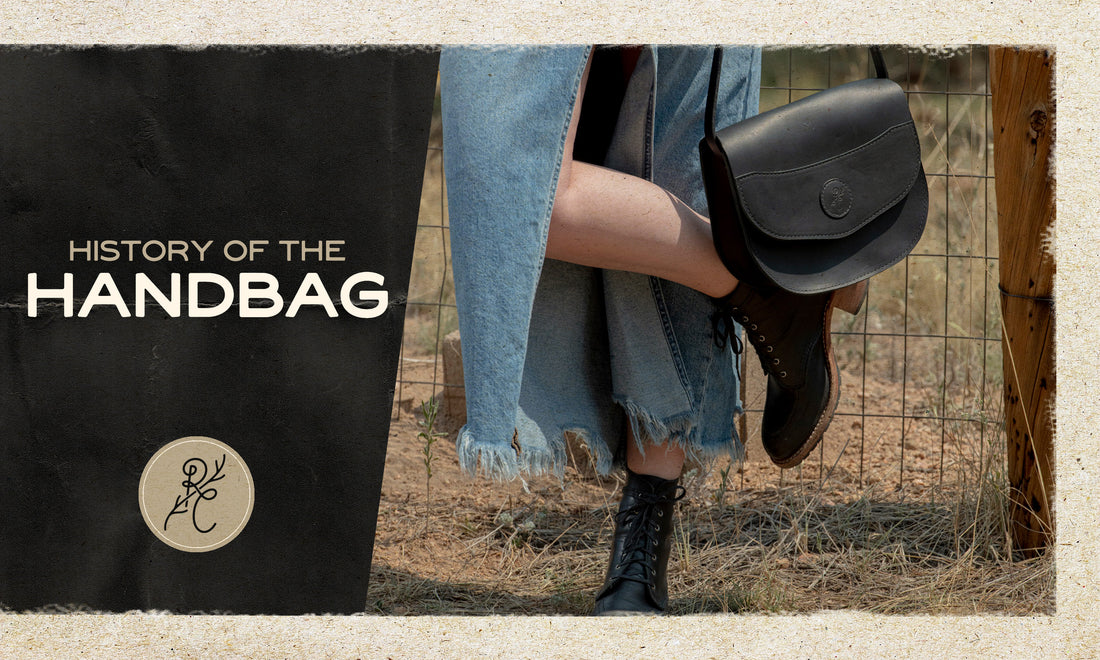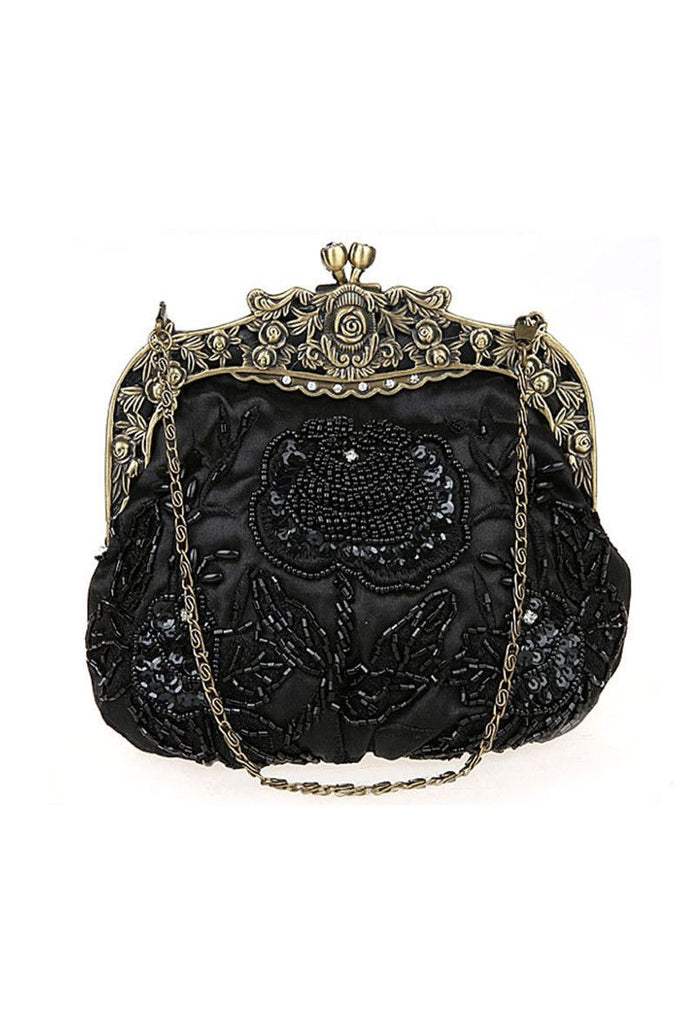
From Pouch to Coach: A History of the Handbag, Ancient to Modern
Share
The handbag as we know it today has only been around since the turn of the 20th century, but its origins may go back to the dawn of time, when man first started clothing and outfitting himself to brave the elements and travel.
The origin of the purse or pouch can be taken at least as far back as around 3000 BC, when the oldest natural mummy found to date outfitted himself with a pouch sewn to his belt. Since the concepts of money and valuables were as yet to be developed, Otzi used his purse to tote small items of usefulness, including a scraper and a drill.
This useful bit of utility was carried throughout time in different ways, and still survives in cultures today, such as the Scottish sporran. Over the centuries, the purse underwent many generations in different cultures and for different purposes.
At times a symbol of luxury and high fashion and at others a matter of practicality, the mainstream handbag as we know it today was the brain-child of the Industrial Revolution. What role might this important accessory take in the future? To understand that, we must first analyze the history of the handbag.

From Ancient Times to the Middle Ages
Purses were originally worn by both men and women as a functional item. Those who stayed in their communities might not have needed a purse, especially before civilizations started using money and valuables in commerce. But for the explorer or the traveler looking to trade with other peoples, having a purse to carry small items was a matter of practicality.
In the middle ages men still put their purses on their belts, while women had purses tied around their waist and hidden in their skirts. Women’s handbags in this era were both practical and fashionable, as well as a sign of wealth. While the skirts kept valuables hidden out of sight and hard for a thief to grab, women still wanted their handbags to be beautiful and make a statement when retrieved.
Women were taught embroidery as a skill necessary for marriage, but this skill had benefits for themselves as well. They were able to embroider beautiful purses for themselves, making handbags not only fashionable but also a source of pride for the accomplished seamstress.
As the middle ages stretched into the Renaissance, these purses took on more unique shapes and designs. Purses became slimmer and less bulky as Renaissance fashion dictated more slimming and form fitting attire.
Post Renaissance Handbags
In the 1800s women’s fashion became even more shapely, and handbags were to match the outfit and be unobtrusive, hanging on the body without sacrificing the design and lines of the clothing. This led to a new generation of handbag – the reticule.
Reticules were made of fine fabrics and attached to the wrist with a delicate strap. While they were meant to conveniently store a small mirror, a bit of coinage, or other small items, they were primarily a fashion statement.
Toward the turn of the 20th century, it became clear that reticules were too delicate in their design to be practical, and some designers started thinking of ways to change that without sacrificing style.

The Industrial Revolution
Like so many industries, the Industrial Revolution took handbags to a whole new level. Luggage, trunks, and carpet bags were very common thanks to mass production and advertising. Trains, and then cars, allowed people to travel further and more frequently, making a purse once more practical to carry all of those small things you need on your way. This led to even more sizes, types, and purposes for handbags.
The first line of luxury handbags was created by designer H.J. Cave, one of the first women-owned industrial companies. Traditionally focused on trunks and luggage, the company answered the call for a more durable handbag for the traveling wife of confectionery industrialist Samuel Parkinson. They developed a line of handbags of varying sizes, including a clutch and a tote similar to those we have today.
Many other fashion designers jumped on board the handbag train, as it were, coming out with additional lines, styles, and types of handbags of their own. Designers like Coach, Gucci, and Prada are just a few of those who still boast the highest-quality and most-desired handbags.
This signaled a return to practicality, even though there was still high demand for luxury items that show worth and style. Going into the 20th century, handbags became a mainstream fashion accessory that was expected of all women. Whereas in the late 19th century Freud and others outcried publicly over purses being unfeminine or even bawdy, the 20th century claimed the handbag as a feminine birthright. Even young girls must have a purse to feel as though they are becoming young women, so engrained is the use of the handbag into our ideals of feminism.

WWII Brought Innovative Designs and Materials
The next big change in how handbags were designed and made took place during World War II. Rationing of supplies during the war made handbag manufacturers turn to other materials, including plastic and synthetic fabrics. These handbags were cheaper to manufacture and sell, even though they didn’t hold up to as much abuse.
After the war, designer handbags once more became high fashion. Yet, on the other hand, they could also be produced in a way that made them accessible to all women, young and old, regardless of stature. From that moment, having a practical handbag was a must, having a stylish handbag was a plus, and having a handbag that could do both and be accessible at any budget was a new reality.
